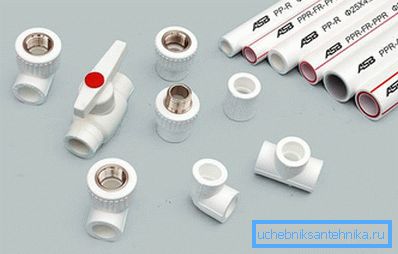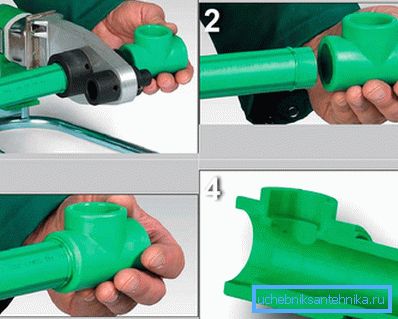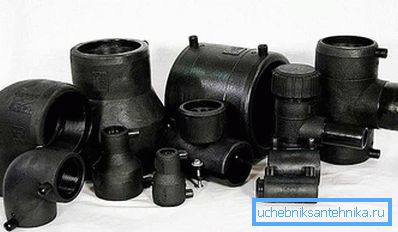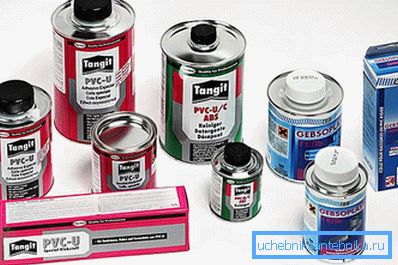Soldering polypropylene pipes yourself: instructions for use
Thanks to the development of production technologies, one can observe how more and more new materials appear on the construction market with enviable consistency. This circumstance allows us to solve familiar problems in new ways, which are characterized by less time for implementation and comparative simplicity of actions. As an example, polypropylene pipes can be cited, after the introduction of which many installation and repair works for the plumbing and sewage systems became available for independent execution.
Advantages of polypropylene

Before proceeding to a detailed description of the installation process, it is necessary to say a few words about what are polypropylene pipes. Understanding of this issue depends on the best perception of soldering technology.
Polypropylene is a thermoplastic polymer used to manufacture a variety of products, including pipes of different diameters used in plumbing work. Among the most characteristic operating characteristics of the material can be identified:
- Easy installation.
- Sufficient strength, when used as intended.
- Relatively light weight.
- Chemical neutrality, due to which the service life of polypropylene products can be calculated for decades.
- At observance of technologies of installation, pipes from polypropylene possess rather high elasticity that provides them universality of application.
- Relatively low cost of products.
- Good sound insulation performance.
Tip! Polypropylene, as a matter of fact, being a kind of plastic, perfectly amenable to soldering and gluing.
Kinds
It is possible to solder polypropylene pipes in several ways.
Diffusion soldering

One of the main embodiments of the designated task is diffusion soldering. The basis of this method is the property of materials to interpenetrate each other when suitable conditions are created for this. In the case of polypropylene, the main condition for this process is heating to a temperature of 260–270 ° C, for which special heating devices are used. Actions on soldering in this way are performed as follows:
- At first it is necessary to prepare the parts of the pipes to be connected. It should be borne in mind that the considered method of connection involves placing the parts into each other, therefore with a special tool you need to cut the chamfer from the ends.
- Then on the heating tool - a soldering iron, special nozzles are installed, selected on the basis of the diameter of the elements to be connected.
- Upon reaching the working temperature, pipes are inserted into the heated parts of the instrument and held for some time.
- After the appearance of the characteristic smell and light smoke, the pipes are removed from the nozzles and inserted into each other. Then the connected part is left to cool.
After cooling, the combined elements will be a monolith and can be used as intended. This method of connection is extremely durable, sealed and easy to implement. However, it should be said that the use of a soldering iron gives the process some cumbersome and difficult use in cramped conditions and hard to reach places.
The use of electrofusion fittings

In cases where pipes need to be connected in a hard-to-reach place, the use of special fittings will be most appropriate. The device of these elements assumes the presence of heating rings inside. Technology works like this:
- Connected pipes are inserted into the fitting and fixed in it fixed.
- Depending on the welding conditions, the connected converter device supplies electrical current to the terminals, as a result of which the elements are heated.
This method is also not particularly difficult, but requires the use of special tools and precautions.
Cold welding

Tip! Previously, PVC pipes on adhesive fittings were widely used for laying pipelines. Now this method is practically not used.
In those places where it is impossible to work with a soldering iron, as another option for connecting pipes you can call the use of special adhesives. In principle, this method is not soldering, but for the sake of completeness, you can also consider it.
Here everything is as simple as possible:
- First, the joined pipe ends are prepared (fitting the diameter to the size of the fitting, cleaning, degreasing, chamfering).
- Then the parts to be joined are coated with an adhesive.
- Parts are inserted into each other and left to dry.
This option can be considered relatively less durable, but more affordable, since it does not require the use of special tools. However, fittings designed for soldering are different from pipes of smaller diameter. Therefore, with adhesive bonding, you will have to ream a fitting or grind a pipe, which is not always convenient.

Tip! In hard-to-reach places you can use the building hairdryer.